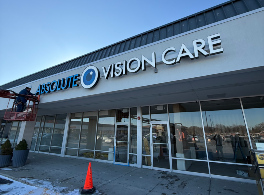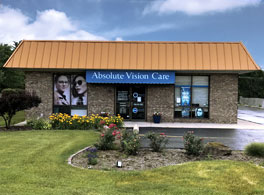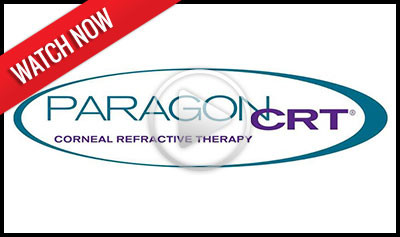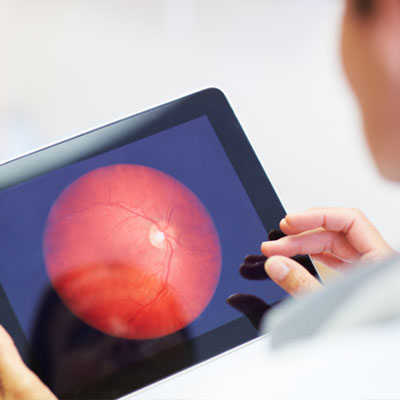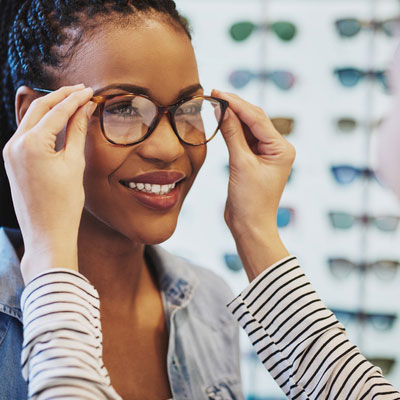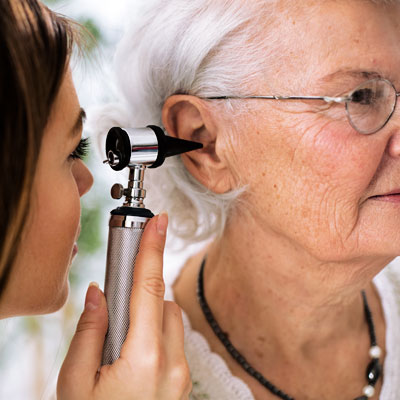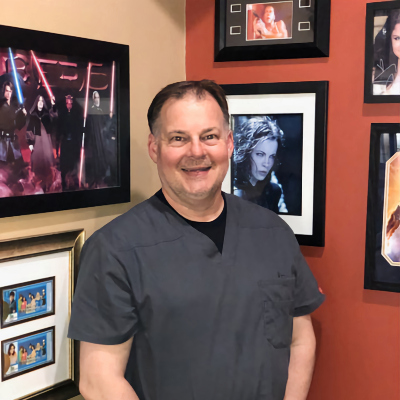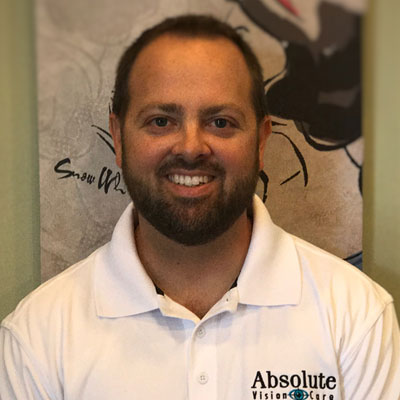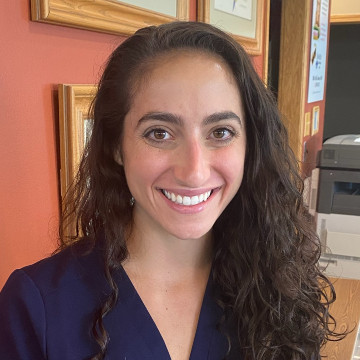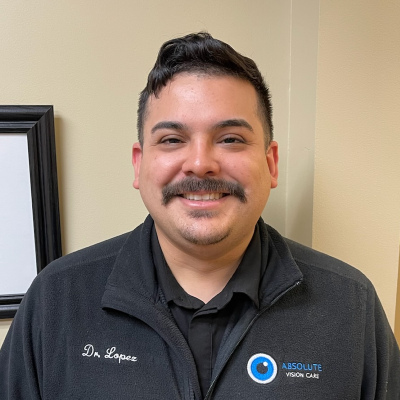dmc
Essilor Eyecode Lenses & Visioffice
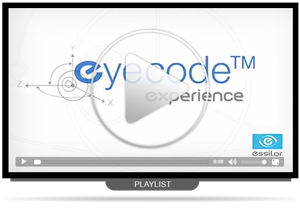
The most unique, interactive measuring and educational tool available today. It delivers the precise, individualized vision characteristics that combine in the creation of a lens is presonalized for the visual needs of your eyes and your environment.
Eyecode™—The Most Individualized Lenses Ever Made! Visioffice is the first and only universal measuring system that allows you to obtain every possible parameter needed for today's individualized lenses. Only the Visioffice system measures a revolutionary new parameter—the real 3D position of the Eye Rotation Center for each eye—so you can dispense Essilor's unique Eyecode™ lenses.
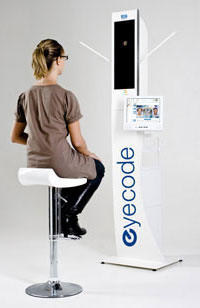
Eyecode lenses are built on 3 levels of personalization
- Eye Data: The Eye Rotation Center (ERC) is a critical parameter that is unique to each person-and to each eye.
- Frame Data: Incorporating frame dimensions is critical to guaranteeing outstanding visual performance. Eyecode lenses are personalized to account for how the lenses will be positioned in front of the wearer's eye.
- Behavioral Data: Natural Head Posture is unique to every wearer and can vary widely, impacting lens performance. Combining the real 3D position of the Eye Rotation Center (ERC) and the Natural Head Posture provides the best visual quality in each gaze direction.
Exclusive Eyecode™ products–only available to eyecare professionals with the Visioffice System
- Varilux Ipseo IV Eyecode™
- Varilux Physio Enhanced Eyecode™
- Essilor Eyecode™ Single Vision
With Eyecode™ lenses, you will get the most precise vision possible, no matter where you look through the lens—instantly and effortlessly.
df'pgj sdfgksdf gl'a
dg fae
pritjdF
asdfasdsfjlgjka
gfl dfk gjartu3497
rF u4rmi356tu8d;
See Clearly & Hear Clearly
Your Professional Eye Doctor & Audiologist in Manhattan, IL and Southwestern Suburbs
If you have vision or hearing problems, come see our clinic in Mokena, Crestwood, or Manhattan, IL for an eye doctor or audiologist with the services you need. Absolute Vision Care & Absolute Hearing Care is home to an assembly of highly educated professionals who use top-of-the-line methods and equipment. We are dedicated to making your vision and hearing as perfect as it can be.
Each of our office locations feature autographed memorabilia to amuse and entertain, and our friendly staff will make you feel right at home when you come in for your appointment. Your complete eye and ear health is our top priority, so you can rest easy knowing that we have your best interests at heart.
Vision & Hearing Care at Your Pace
Our doctors will never push you to undergo a treatment or surgery you don't absolutely need. We're always glad to answer your questions about any procedure or treatment plan you're not sure about. We also offer emergency services when you need to quickly remedy a problem.
Eyewear & Hearing Solutions You Can Trust
If you're not completely satisfied with your eyewear, we have a 30 day, no-questions-asked return policy. You can return the glasses outright, change your frames or lenses for comparably priced ones (at no additionalcharge), or upgrade to higher-priced frames and simply pay the difference.
For better vision and hearing health, call or visit Absolute Vision Care & Absolute Hearing Care to make an appointment with an eye doctor or audiologist in our Crestwood, IL; Manhattan, IL; or Mokena, IL location today.
Eyes Over 40
Solutions for Presbyopia
 As people reach their mid to late 40s, a condition called presbyopia can set in. Presbyopia is the inability to focus on objects near the eye. One usually notices that it is harder to read or use the computer. Wearing bifocals or reading glasses is a way to remedy this condition.
As people reach their mid to late 40s, a condition called presbyopia can set in. Presbyopia is the inability to focus on objects near the eye. One usually notices that it is harder to read or use the computer. Wearing bifocals or reading glasses is a way to remedy this condition.
Presbyopia is a natural consequence of the aging process. There is no cure, though researchers are constantly looking for one. Even if a person has never had vision problems before, he or she can still develop presbyopia.
While symptoms can present suddenly, presbyopia usually occurs over a long period of time. Symptoms include having to hold things at arm’s length to see them clearly, eye strain, fatigue and headaches from near work.
Computer Glasses
 To reduce eye strain and fatigue, we carry specialized computer lenses. These lenses are perfect for computer users who spend a majority of their days working on computers. And since three out of four computer users will suffer from Computer Vision Syndrome, computer lenses are a great way to keep your eyesight healthy.
To reduce eye strain and fatigue, we carry specialized computer lenses. These lenses are perfect for computer users who spend a majority of their days working on computers. And since three out of four computer users will suffer from Computer Vision Syndrome, computer lenses are a great way to keep your eyesight healthy.
Recommended Link
All About Vision: Computer GlassesReading Glasses
One of the first areas of your life where presbyopia becomes prominent is in your ability to read. There are a variety of styles available, with sleek designs that allow you to carry them anywhere.Recommended Link
All About Vision: Reading GlassesMultifocals/No Line Bifocals
Recommended Link
All About Vision: MultifocalsMultifocal Contacts
If you need bifocals but cannot stand wearing glasses, you may need multifocal contact lenses. Now you can have all of the benefits of bifocal lenses in the convenience of contact lenses. Talk with your doctor about multifocal contacts today.Recommended Link
All About Vision: Multifocal ContactsMonovision Correction
For some of our emerging presybopes we offer another option to glasses, monovision. This is a method of fitting your dominant eye for distance vision and your non-dominant eye for near vision. Contacts are available in disposable, extended wear, and even daily disposable lenses to fit your lifestyle. Most patients require 2-4 weeks to make the adjustment from binocular vision to monovision.Recommended Link
All About Vision: MonovisionVision Conditions
Amblyopia (lazy eye)
Amblyopia, commonly called lazy eye, occurs when one eye develops differently than the other eye, causing one eye to be weaker than the other. Sometimes a difference in focusing ability causes one eye to be used more often. Other times, the eyes are misaligned, causing one eye to "shut off" to avoid double vision. Regardless of the cause, the result is a weakened or amblyopic eye.Symptoms
It's hard to spot amblyopia. Sometimes a child will noticeably favor one eye over the other. Another possible symptom is the child frequently bumping into things on one side. The best way to tell if your child has lazy eye is through a complete exam around six months and three years. Early diagnosis can prevent amblyopia from leading to more serious problems such as loss of the ability to see three dimensions or functional blindness in the amblyopic eye.Treatment
Most of the time amblyopia can't be entirely corrected. The amblyopic eye will always be a bit weaker than the other. However, with treatment, vision in the amblyopic eye can be improved to some extent. Treatment involves encouraging the weak eye to develop. This is done using eye patches, vision therapy, glasses, and usually a combination of the three. The strong eye may be patched to encourage the weak eye to develop. Vision therapy can help to correct improper use of the eyes. If a focusing error is at the root of the problem, then glasses may reduce the error. Most of the time the amblyopic eye will always require glasses.Astigmatism
 Sometimes the cornea is irregularly shaped, causing the eye to focus an object on two different areas of the retina. This is known as astigmatism. For the cornea to bend light correctly, it should be dome-shaped, like a basketball. Astigmatic corneas are shaped more like a football. This causes a distorted view when looking at objects which are close-up and far away.
Sometimes the cornea is irregularly shaped, causing the eye to focus an object on two different areas of the retina. This is known as astigmatism. For the cornea to bend light correctly, it should be dome-shaped, like a basketball. Astigmatic corneas are shaped more like a football. This causes a distorted view when looking at objects which are close-up and far away.
The cause of astigmatism is unknown. Astigmatism is often associated with myopia or hyperopia, and usually occurs from birth. It may be hereditary, or it may be caused by factors such as pressure on the cornea, incorrect posture, or increased use of the eyes for "near work." Mild astigmatism usually doesn't need to be corrected. Eyeglasses, contact lenses, or refractive surgery can correct moderate to high degrees of astigmatism.
Computer Vision Syndrome
 Computer Vision Syndrome (CVS) affects 75% of computer users. It is a series of symptoms related to extended periods of computer usage. Don't worry, there is no cause for panic, measures can be taken to relieve it.
Computer Vision Syndrome (CVS) affects 75% of computer users. It is a series of symptoms related to extended periods of computer usage. Don't worry, there is no cause for panic, measures can be taken to relieve it.
Symptoms
CVS can appear as a variety of symptoms such as: headaches, eye strain, neck and back aches, sensitivity to light, blurred vision, double vision, and irritated eyes.Risk Factors
Any computer user can develop CVS. Your vision, your computer, and the environment where you use your computer are all factors which can lead to CVS.Emmetropia
When an eye's optical power is perfectly matched to its length, the eye is said to be emmetropic. Emmetropia is the medical term for 20/20 vision needing no corrective lenses, contact lenses, or reading glasses. It occurs because the optical power of the eye can perfectly focus an image to the retina, giving them "perfect" vision. The opposite of emmetropia is ametropia. With ametropia, the focal point of the eye is some distance in front of or behind the retina.
![]()
Hyperopia (farsightedness)
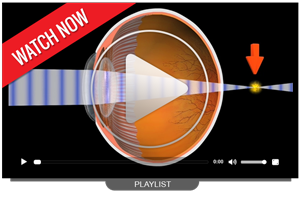 Hyperopia is more commonly known as farsightedness. As the name suggests, people with farsightedness are able to focus on objects that are further away, but have difficulty focusing on objects which are very close. This is because the eyeball is shorter than normal, which prevents the crystalline lens in the eye from focusing correctly on the retina.
Hyperopia is more commonly known as farsightedness. As the name suggests, people with farsightedness are able to focus on objects that are further away, but have difficulty focusing on objects which are very close. This is because the eyeball is shorter than normal, which prevents the crystalline lens in the eye from focusing correctly on the retina.
About 25% of the population are afflicted with hyperopia. Hyperopia can lead to chronic glaucoma, a more serious condition, later in life.
A family history of hyperopia is a risk factor for developing hyperopia. Often babies are born with hyperopia but they can usually outgrow the condition as the eye develops into the correct shape.
Hyperopia can be corrected with eyeglasses or contact lenses. There are also new surgical procedures that can correct hyperopia.
Myopia (nearsightedness)
 Myopia is the medical term for what most people call nearsightedness. It is a condition where you can see objects clearly only when they are closer, but when objects are further away you can't focus on them. Myopia usually develops in early childhood, though it sometimes develops in early adulthood. In rare cases, myopia can lead to more serious conditions such as retinal detachment.
Myopia is the medical term for what most people call nearsightedness. It is a condition where you can see objects clearly only when they are closer, but when objects are further away you can't focus on them. Myopia usually develops in early childhood, though it sometimes develops in early adulthood. In rare cases, myopia can lead to more serious conditions such as retinal detachment.
Myopia is considered a genetic disorder. If your parents are nearsighted, you are at greater risk of also being nearsighted. Another risk factor is 'near work' - work involving fine detail or focusing on close objects.
Myopia can be accommodated and sometimes corrected with eyeglasses or contact lenses. Sometimes myopia continues to gradually worsen throughout life, a condition known as myopic creep. Myopia can also be corrected by LASIK surgery.
Presbyopia
 As a people get older, usually when they hit their mid to late 40s, a condition called presbyopia can set in. Presbyopia is the inability to focus on objects near the eye. One usually notices that it is harder to read or use the computer. Bifocals or reading glasses are a way to remedy it.
As a people get older, usually when they hit their mid to late 40s, a condition called presbyopia can set in. Presbyopia is the inability to focus on objects near the eye. One usually notices that it is harder to read or use the computer. Bifocals or reading glasses are a way to remedy it.
Presbyopia is a natural consequence of the aging process. There is no cure, though researchers are constantly looking for one. Even if a someone has never had vision problems before, they can still develop presbyopia.
It may seem to occur suddenly, but actually occurs over a long period of time. Symptoms include having to hold things at arm's length to see them clearly, eye strain, fatigue, and headaches from near work.
Also Serving Lockport, Homer Glen, Romeoville, IL and Surrounding areas
Non-Surgical Vision Correction
Corneal Refractive Therapy (CRT) is the newest advancement in refractive therapy options. CRT allows you to see clearly during the day without glasses or contact lenses. Specially designed therapeutic lenses gently reshape the front surface of your eye while you sleep.
Imagine great vision all day without contacts, glasses or surgery. No more problems from dust, allergies, or dryness. CRT has also been shown to slow the progression of nearsightedness in children and teenagers.
Previously, if you were nearsighted and wanted to see clearly during the day, your options were glasses, contacts, or laser surgery. CRT offers a new non-surgical solution. No more worry about broken frames or torn contact lenses. Additionally, while LASIK has been approved only for those over 18 years of age, CRT is ideal for our younger patients who are active in sports and do not like the hassle of glasses or contacts.
For more information on Corneal Refractive Therapy, call today to schedule your FREE CRT consultation or visit Paragon.
Contact Lenses in Crestwood, Mokena, and Manhattan IL
 Contact lenses, when used properly, are very convenient and, with the latest advancements in technology, are extremely comfortable. Most of the time you will hardly know you are wearing them, though you will certainly notice how clear your vision is. Contact lenses are small lenses worn, on the surface of the eye to correct vision.
Contact lenses, when used properly, are very convenient and, with the latest advancements in technology, are extremely comfortable. Most of the time you will hardly know you are wearing them, though you will certainly notice how clear your vision is. Contact lenses are small lenses worn, on the surface of the eye to correct vision.
We are happy to discuss the options available for you. Many patients choose contact lenses for their primary vision correction and glasses for back-up or part-time wear.
Many patients prefer to wear glasses for the majority of their day, but have activities and events where they'd rather not wear their glasses and choose contact lenses for these times.
If you are a first-time wearer, click here for wearing instructions.
| Conventional Soft Lenses | Disposable Soft Lenses |
| Tinted Soft Lenses | Multifocal Soft Lenses |
| Toric Soft Lenses | Extended Wear |
| Rigid Gas Permeable | Solutions |
| Contact Lens Instructions |
Contact Lens Types
The types of contact lenses available have increased significantly over the past few years. There are contact lenses available for almost everyone. Many or our patients were told in the past that they couldn't wear contacts, or unsuccessfully tried contact lenses. You owe it to yourself to see what's new. We carry many options, and promise to do our best in selecting contact lenses that you'll love wearing. Choose from the following list for a brief look at some of the options available.
Conventional Soft Lenses
Soft lenses are very comfortable and come in a variety of types, depending on the wearer's needs. Conventional soft lenses are worn during the day, and cleaned and stored at night. Usually once a week the lenses must be cleaned using an enzymatic cleaner, which removes protein deposits. These lenses can last for a year or more if your prescription stays the same and you take good care of them.
Disposable Soft Lenses
Disposable soft lenses are much more popular than conventional soft lenses. These lenses are worn for a period of time then, of course, thrown away. The most well-known disposables last for two weeks. There are also one-week and one-day disposables. These are perfect for many patients who were told they couldn't wear contact lenses because of allergies or mild dry eye conditions. They have a low cost per lens and are also popular for athletes and hobbyists who don't necessarily want to wear contact lenses every day.
Tinted Soft Lenses
Next, you have tinted soft lenses, available in conventional, disposable, or frequent replacement types. With tinted soft lenses, you can change your eye color or enhance your eye color. Even if you don't need corrective lenses, you can use "plano" tinted lenses to change your eye color
Multifocal Soft Lenses
 Regular Contact Lens
Regular Contact Lens
When a person with presbyopia wears regular contact lenses with distance correction only, light rays from intermediate and near distances are not focused on the back of the eye.
 Frequency 55 Multifocal
Frequency 55 Multifocal
CooperVision's Balanced Progressive Technology helps provide superior vision by focusing light from near, intermediate and far distances on the back of the eye.
Bifocals without the Frame?
That's right. There are new multifocal contact lenceses and Aboslute Vision Care has them. These lenses achieve the impossible by correcting distance and near, but also address intermediate focus zones, like a computer monitor, workbench, or the dashboard of a car.
Cutting Edge Technology
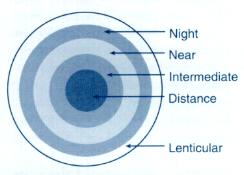 This is done by the bull's-eye construction of the lens. Where bifoal contact of the past were heavily weighted, causing discomfort and rotation, these bull's-eye type multifocal lenses successfully give the patients back the clarity of the car dashboard, workbench, computer, and those shelf price tags that always seem to be at an awkward position.
This is done by the bull's-eye construction of the lens. Where bifoal contact of the past were heavily weighted, causing discomfort and rotation, these bull's-eye type multifocal lenses successfully give the patients back the clarity of the car dashboard, workbench, computer, and those shelf price tags that always seem to be at an awkward position.
Will They Work For You?
Absolute Vision Care's doctor's have a great deal of experience with multifocal conatact lenses and lens types. We fit a variety of brands, matching your individual ocular needs with the lens that best offers you the benefits required for healthy contact lens wear.
Let Us Show You
Call now to set up an appointment to find out more about this safe and revolutionary way to see the world in a whole new way.
Have you enjoyed your contacts for years, but finding it hard to focus when reading? Or perhaps you're finding your arms are not quite long enough. Have glasses been your only mode of vision corrections? Ever been told you can't wear contacts? The future of contacts is now, an it's at Absolute Vision Care.
Recent technology has greatly improved bifocal soft lenses. Many patients past their 40s who need bifocals can now enjoy the comfort and benefits of soft contact lenses.
Toric Soft Lenses
Toric lenses are used to correct astigmatism. Astigmatism is a vision condition where an irregularly shaped cornea affects the vision. In the past, if you had astigmatism, your only options were either glasses or hard gas permeable contact lenses. But toric lenses now offer an alternative. There are several types of toric lenses to choose from.
Extended Wear Soft Lenses
Extended wear lenses are the result of new technology in lens materials that transmit more oxygen to the cornea of the eye. Some of these lens materials can be worn up to 30 days, day and night, without removal. Extended wear lenses can last one week, two weeks, or one month, depending upon the lens material and your doctor's recommendations.
Rigid Gas Permeable (RGP) Lenses
As the name implies, these lenses are hard and gas permeable. If you've been told you can't wear soft lenses, RGP lenses are often a great alternative. RGP lenses are available in specialized designs to correct just about any vision disorder.
Solutions
There are a variety of solutions available from many different manufacturers. The important thing to remember is that not every solution is right for every type of contact lens. Some contact lenses require the use of multipurpose solutions, while others require separate solutions for the four steps in contact lens care: disinfecting, cleaning, rinsing, and enzyming. Use only the lens solutions that are recommended by your eye doctor. If you wish to change brands, check with our office first.
Contact Lens Instructions
Few things affect the quality of your life more than your eyes-never put them at risk. Contact lenses are prescription medical devices. To make sure your eyes and vision stay healthy while wearing contact lenses, please follow these few guidelines or the instructions recommended by your doctor.
Ocular complications and/or long-term corneal damage are the consequences of contact lenses that are worn longer than recommended. Oftentimes, your lenses will still feel good even when you are over-wearing them. Do not wear your lenses overnight unless they are approved for extended wear and your doctor has discussed this with you. Overnight wear increases the risk of infection and other complications.Wearing Schedule
It will take at least a few days for your eyes to get used to wearing contact lenses. The best way to insure maximum visual comfort and keep your eyes healthy is to patiently and faithfully adhere to this wearing schedule.
| Day | Gas Permeable Lenses | Soft Lenses |
| 1 | 4 hours | 6 hours |
| 2 | 6 hours | 8 hours |
| 3 | 8 hours | 10 hours |
| 4 | 10 hours | 12 hours |
| 5 | 12 hours | 12 hours |
Oftentimes, your lenses will still feel good even when you are over-wearing them. Following are some basic Do's and Dont's of Contact Lens Care:
- DON'T wear your lenses overnight unless they are approved for extended wear and your doctor has discussed this with you. Overnight wear increases the risk of infection and other complications.
- DON’T wear your lenses longer than 12 hours a day until your first follow-up visit with your doctor, unless the doctor has specifically told you otherwise.
- DON’T continue use of contact lenses if your eyes become red, irritated, painful, or if your vision gets worse while wearing lenses. Immediately take out the lenses and clean them. Let your eyes get back to normal and if the problem persists, contact our office.
- DON’T exceed the wearing times suggested, even if your lenses still feel comfortable. Studies have proven that the eye needs time to adapt to contact lenses, and your wearing schedule is based on those studies.
- DO always remove your contact lenses at least one hour before going to bed to allow for proper oxygen nourishment to the cornea.
- DO wear your contact lenses for at least 3 hours before your follow-up appointment unless you are experiencing discomfort.
- DO schedule and keep follow-up appointments with your eye doctor.
Caring For Your Contacts
Deposits and infectious organisms such as bacteria, viruses--etc., can build up on the surface of all contact lenses. For this reason, it is very important to keep them clean and disinfected.
There are four steps in contact lens care--follow the care prescribed for your lenses:
- Cleaning removes dirt, mucous, and other debris that gets on the lenses during wear.
- Disinfecting kills bacteria (germs) on the lenses. Disinfecting is essential to prevent serious eye infections.
- Rinsing removes the other solutions from the lenses and prepares the lenses for wear.
- Enzyming uses enzyme drops or tablets to remove protein and other deposits that build up over time on the lenses.
The best way to properly care for your lenses is to develop a care routine, then stick to it. Remember to:
- Follow the directions outlined by your eye doctor. Oftentimes instructions are also listed on the packaging or the package insert for the contact lens solutions prescribed for you.
- Multi-purpose solutions can be used for more than one step in contact lens care. Read the label to see which functions the solutions can be used for.
- Many solutions can not be used together, and not all solutions are appropriate for all types of lenses. Only use solutions recommended by your eye doctor, and check with your eye doctor if you want to switch brands.
- When you remove your lenses, they must be cleaned, rinsed, and disinfected before they are worn again.
- Enzyming and cleaning are not a substitute for disinfecting.
- Lenses that have been stored for more than 12 hours may need to be cleaned, disinfected, and rinsed again.
- Make sure solution containers are kept closed tightly, stored upright, and kept in a clean, dry, cool place when you are not using them. Keep your case clean and replace it every 2-3 months to prevent bacterial growth.
- Don’t touch container bottle tips to any surface to prevent them from becoming contaminated.
- Throw away expired solutions. (Look on the bottle for the expiration date)
- Use new solution in your contact lenses case every day.
- Discuss with your eye doctor the care for your lenses if you wear them while swimming in a pool or hot tub.
- Only use approved rewetting drops for lubricating or wetting your lenses. Never place the lenses in your mouth.
- Do not use tap water to rinse soft contact lenses.
- Be careful with makeup, lotions, creams and sprays--consider putting on lenses before makeup and remove them before removing makeup. Also, water-based makeup is less likely to damage lenses than oil-based makeup.
Here’s what you need to watch for: Redness, blurriness, light sensitivity. Remove your lenses if you are experiencing any of these 3 things. If your eyes have not returned to normal after 24 hours, please contact our office. If you have any change in vision, comfort, or irritation, immediately remove your lenses. If there is no improvement within a couple of hours, please contact our office.
Clean. Clear. Crizal®
 Crizal offers a full range of No-Glare lenses for the clearest vision possible and the most comprehensive daily UV protection1. Plus, Crizal lenses have been granted the prestigious Good Housekeeping Seal as a symbol of consumer trust and satisfaction.
Crizal offers a full range of No-Glare lenses for the clearest vision possible and the most comprehensive daily UV protection1. Plus, Crizal lenses have been granted the prestigious Good Housekeeping Seal as a symbol of consumer trust and satisfaction.
Crizal Prevencia lenses help protect your eyes from harmful Blue-Violet light in everyday surroundings including sunlight, indoor lighting, and most digital screens.
Normal eyewear often creates glare, reflections, and “ghost images.” Now all that can be eliminated with an anti-reflective treatments. What we see is a result of light being sensed by our eyes. With normal glasses, much of the light reflects off the lenses. This produces glare. It also reduces the wearer’s visual acuity. In other words, the light reflection is both a cosmetic and visual problem.
Anti-Reflective Coating
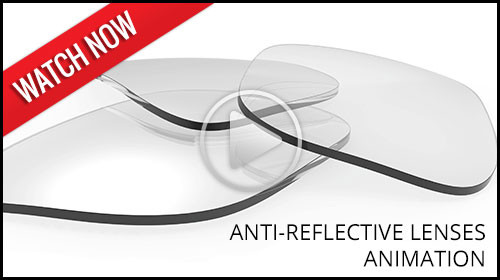 Normal eyewear often creates glare, reflections, and “ghost images.” Now all that can be eliminated with an anti-reflective treatments.
Normal eyewear often creates glare, reflections, and “ghost images.” Now all that can be eliminated with an anti-reflective treatments.
What we see is a result of light being sensed by our eyes. With normal glasses, much of the light reflects off the lenses. This produces glare. It also reduces the wearer’s visual acuity. In other words, the light reflection is both a cosmetic and visual problem.
Anti-reflective treatments increase light transmission through the lenses to 99.5 percent. They make it easier to see and easier for others to see you. These patented treatments are especially useful for those viewing computer screens and driving at night, and our Avance with Scotchgard provides an outstanding surface protection and superb ease of cleaning not achieved by any other product
Bifocal Lenses
For many people, different lenses are needed for seeing at different distances. Bifocal lenses allow the wearer to look through two areas of the lens. One area focuses on distant objects, the other is used for reading. A little-known fact is that bifocals were invented by Benjamin Franklin, and his style of bifocals are still available today.
Most of the time the “reading” area is smaller, shaped like a sideways “D”, and found in the lower portion of the lens. These bifocals are called lined bifocals or flat-tops. If you are focusing on distant objects, you look through the top half of the lenses. To read a book, magazine, or newspaper, you look through the lower “reading” area. The Franklin style lenses are less common, and are split horizontally across the middle of each lens. One thing that can be difficult about using bifocals is dealing with the line between the two vision areas. Fortunately, recent technologies have developed a new type of lens, called the no-line, or progressive, lens.
Cosmetic & Specialty Tints
Eyeglasses can be a stylish accessory, a part of your personality, or a way for you to be unique. There are a variety of frames to choose from, but you may not know that there are also many ways to improve the appearance of the lenses, too. Cosmetic tints are now available. These tints offer a variety of colors and shades. You can choose light blue or any other color of the rainbow. Some lenses are clear at the bottom and gradually get more colored towards the top of the lenses. There are many ways to adjust your lenses to whatever style suits your personality. Some tints are also functional.High Index Lenses
Years ago,, the only materials available for use as lenses were glass and a hard resin called CR-39. More recently, high index lenses have become available. High index materials are named because they have a higher index of light refraction. Basically, they can do the same job that glass or CR-39 does, but high index lenses are much thinner and lighter. With high index lenses, you can avoid having “soda bottle” lenses.
- Polycarbonate: The first and still most popular high index material is polycarbonate. Polycarbonate was originally developed for fighter jet cockpits. It is light, and very resistant to impact. Most sports lenses are made of polycarbonate.
- Mid-Index: High index materials are classified by numbers. The higher the number, the thinner and lighter the lens. The lower numbers are classified as mid-index lenses. Mid-index lenses, such as 1.54, 1.56, and 1.57, are thinner than glass (1.53), and nearly as strong as CR-39 plastic (1.49).
- High-Index: High index lenses, such as 1.60, 1.66, 1.70, and 1.71, are much thinner than regular glass or plastic. Talk with our trained optician to decide which high index lens is right for you.
Progressive/Multifocal Lenses
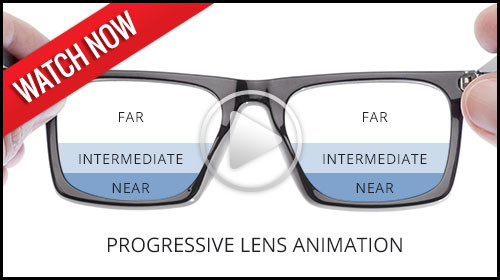 One of the main problems with bifocal and trifocal (multi-focal) lenses is that the lines separating the various focal ranges are visible to the wearer, and often cause images to "jump".
One of the main problems with bifocal and trifocal (multi-focal) lenses is that the lines separating the various focal ranges are visible to the wearer, and often cause images to "jump".
A substancial improvement to progressives are the Varilux family of multifocal lenses. Varilux is the industry leader in multifocal lenses created for the unique needs of each wearer. From the Ipseo, Physio and Physio Enhanced, to the Definity, Definity Short, and the New Comfort, Varilux has the lens for you!!
An improvement in multifocal design is the no-line or progressive lens. No-lines provide a smooth transition from focusing on nearby to focusing on distant objects because they do not have a distinct line which separates the focusing powers. Instead, a gradual change in power allows the wearer to focus on objects at all distances. Distant objects are viewed through the upper portion of the lens, while near objects are viewed through the middle or lower portion of the lens. These are also great for computer users.
Photochromics (Lenses darken with sunlight)
If you have ever felt frustrated at needing both prescription glasses and prescription sunglasses to accommodate an outdoor lifestyle, you should consider photochromic lenses. Photochromic lenses darken when exposed to UV rays. The change is caused by special molecules that are found throughout the lens or in a coating on the front of the lens. When the wearer goes outside, the lenses darken or tint. When the wearer goes back inside, the lenses become clear again.
There are a variety of photochromic options available with choices in color or darkness of tint. An important fact about photochromic lenses is that they do not darken as fully when worn while driving a car, because the windshield absorbs much of the UV light required to activate the lens.
Transitions
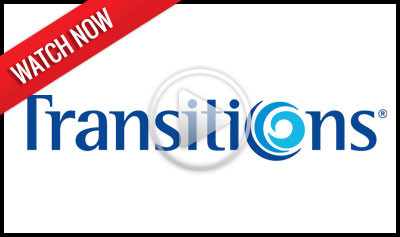 When Transitions® lenses are exposed to UV light, trillions of photochromic molecules in the lens begin to change structure. This reaction is what causes the lenses to darken.
When Transitions® lenses are exposed to UV light, trillions of photochromic molecules in the lens begin to change structure. This reaction is what causes the lenses to darken.
All lenses that adapt to light use photochromic molecules; the superiority of Transitions brand technology lies in our exclusive, patented formulas. Each formula is integrated into the surface of the lens. These molecules constantly and smoothly recalibrate so the optimal amount of light reaches your eyes whether you’re in bright sunlight, under cloud cover or indoors.
Polarized Lenses
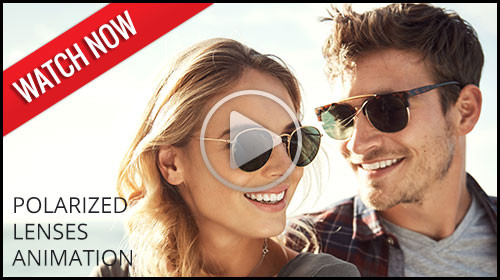 Glare from wet roads, light reflecting off other vehicles, and glare from your own windshield can be annoying and dangerous. To eliminate this glare, we offer polarized lenses. Polarized lenses significantly reduce glare, decreasing eye strain and increasing visibility. Polarized lenses are the most effective way to reduce glare.
Glare from wet roads, light reflecting off other vehicles, and glare from your own windshield can be annoying and dangerous. To eliminate this glare, we offer polarized lenses. Polarized lenses significantly reduce glare, decreasing eye strain and increasing visibility. Polarized lenses are the most effective way to reduce glare.
Most glare comes from horizontal surfaces, so the light is "horizontally polarized." Polarized lenses feature vertically-oriented "polarizers." These polarizers block the horizontally-polarized light. The result is a glare-reduced view of the world. Polarized lenses can make a world of difference for any outdoor enthusiast. Fishermen can eliminate bright reflections from the water and actually see into the water more easily than with any other sunglasses. Golfers can see the green easier, and joggers and bikers can enjoy reduced glare from the road. In addition, drivers can enjoy the safety and comfort that polarized lenses provide while driving.
Scratch Resistant Coating
If you chose hard resin lenses, including high index, you should consider getting a scratch resistant coating. Resins and plastics are more susceptible to scratches than glass. Scratches damage the cosmetic look of the lenses and compromise their performance. With a scratch resistant coating, you do not have to worry as much about minor scratches on your lenses. Another advantage of scratch resistant coatings is that most coatings come with a one-year warranty. They are a great investment to prevent minor scratches. However, it is important to remember that scratch resistant does not mean scratch-proof. All lenses are susceptible to scratches.
but the surface treatments included with Avance and Sapphire offer a level of protection and guarantee that stands alone in the industry.
Specialty Lenses
 We all have heard the phrase, "Different strokes for different folks." Well, this holds true in terms of selecting glasses. There are different lenses for just about everybody. No matter what your particular need, there's probably a specialty lens designed for you.
We all have heard the phrase, "Different strokes for different folks." Well, this holds true in terms of selecting glasses. There are different lenses for just about everybody. No matter what your particular need, there's probably a specialty lens designed for you.
For example, a specialty lens that is becoming increasingly useful is designed for computer users. Computer lenses have "windows" designed for viewing your computer screen, documents on your desk, the keyboard, and near objects for reading. The lenses are designed to reduce Computer Vision Syndrome, or CVS, which is characterized by headaches, eye strain, neck and back aches, dry eyes, blurred vision, and double vision.
Another example is called the double D-segment lens, also known as the double flat-top lens. If you look through the center portion of the lens, you can focus on distant objects. But you can also look through a D-shaped segment near the top of the lens to see nearby overhead objects more clearly. This is very useful if you are involved in work where you're looking at nearby objects above your field of vision, as with carpenters and pilots. The D-shaped segment near the bottom of the lens allows for reading.
Trifocal Lenses
Bifocals allow the wearer to read through one area of the lens, and to focus on distant objects through another area of the lens. As the eyes age, though, a stronger prescription is needed to read. As the bifocal power increases, the range of focus with it becomes more shallow, making it difficult to focus on objects at middle distances, such as grocery items on a shelf or your speedometer. Thus, trifocals are necessary for a third prescription for intermediate focusing.
Trifocals, also known as line trifocals, feature three areas of focusing power, each separated from the other by a distinct line. The three windows allow for focusing on distant objects, intermediately distanced objects, and for reading. The downside of trifocals is dealing with the lines between the different focusing powers. The advantage of this design is that the intermediate and near sections are wider than those of progressive lenses.
Absolute Vision Care's own Dr. Johnson usees ChromaGen lenses to help local student with reading disorder.
Essilor and AVC have teamed up to bring you quality vision and information in a whole new way… Click the logos below to find out more!







